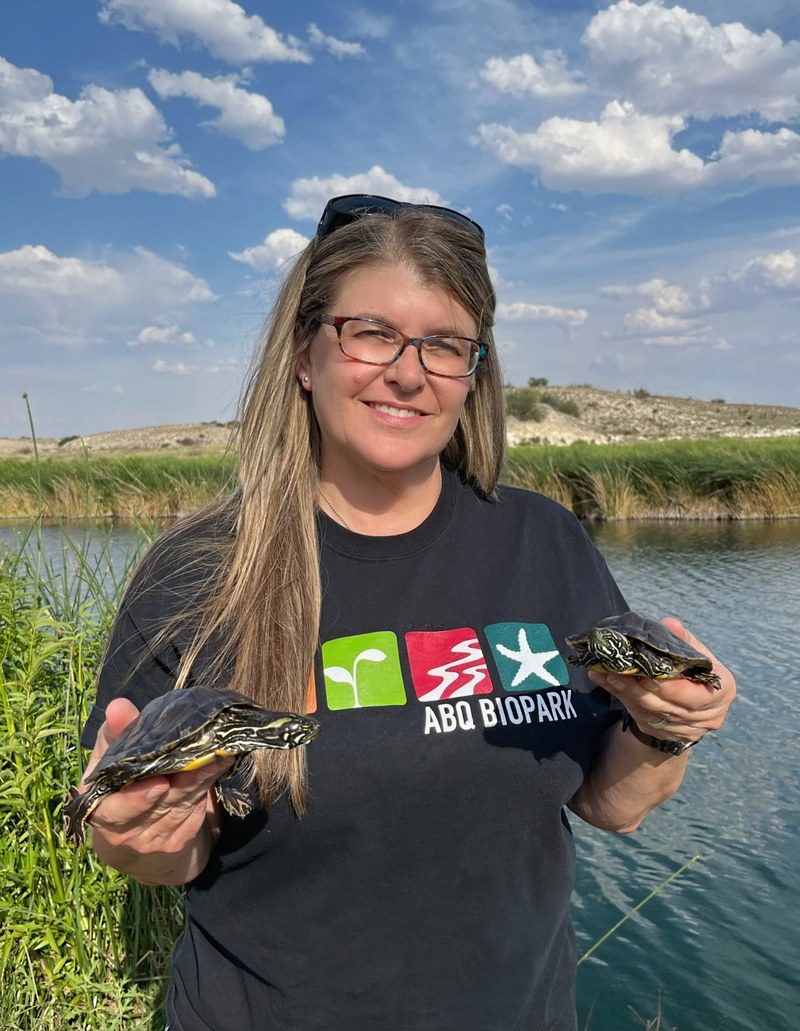
ABQ BioPark releases three Rio Grande cooters near Carlsbad, New Mexico
A collaborative conservation effort led to the planned release of the turtles hatched at the BioPark Zoo.
Slow and steady wins the race…against extinction, that is! Since 2017, the ABQ BioPark has been raising Rio Grande cooters and recently released three into the Black River in southeastern New Mexico. These aquatic turtles are native to the Rio Grande watershed and are currently listed as Near Threatened by the International Union for Conservation of Nature’s Red List of Threatened Species. A partnership between the ABQ BioPark, the NM Department of Game and Fish, and North Carolina State University launched a project to study and develop the best practices for raising the cooters in human care. The BioPark’s goal is to have a deep understanding of their needs and create ways for them to thrive in human care so that if they become threatened in the future, we will be ahead of the game.
Success in breeding and rearing resulted in a planned release on June 21, 2023. After hatching, the selected turtles and their siblings quickly grew big and strong under the attentive care of BioPark staff; reaching the goal size of 110 mm in about two years. The next step to prepare for their new home was to move the young turtles into a space where the water temperature was adjusted incrementally to the target of 71° F, the average temperature of the river. To protect the wild cooters, various health tests were performed for potential diseases prior to travel. Stacey Sekscienski, ABQ BioPark Curator of Herpetology, and the collaborating teams then met at the place where the mother of the turtles was hatched. The trip was made possible by funding from the New Mexico BioPark Society.
Just like your dogs and cats at home, the young cooters are microchipped! This will help researchers identify them if they are seen in the future. In fact, thanks to the microchip ID, one of the males has already been confirmed once, six days later! Unlike their older siblings who were very interactive with their human caretakers, the three hatchlings chosen for release would prefer to duck their heads underwater or dive beneath a rock when it was feeding time. It’s this wariness of humans that makes the young turtles excellent candidates for survival in the wild. When the trio was released, they swam off quickly into the river…but then returned to the research teams watching from the river bank. It was almost as if they said goodbye, while Stacey and the research team squealed with surprise and delight. See photos of the magical moment below!
What’s next? At this time, there are 8 eggs in incubation. The BioPark will be adjusting the hatchling diet to better match the diet of wild cooters. If successful, this nutrition strategy along with the developed care practices could be applied to care of other native turtles that are at risk of extinction.
The BioPark’s partners in this endeavor support the continuation of the Rio Grande cooters project. Leland J. S. Pierce with the NM Department of Game and Fish wrote, “I greatly appreciate the opportunity to work with the staff of the Albuquerque BioPark. Turtles are a vital part of riverine ecosystems, including down in the southeastern parts of New Mexico. The Rio Grande cooter has a limited distribution in the state and while we are working to learn more about its life history and, by extension, its conservation, we still have a ways to go. The BioPark is helping us to learn more about the reproductive biology and may be an important conservation resource, should an assurance population be needed to back up the populations here.”
"I've been working on the Rio Grande Cooter for the past 8 years with a goal to provide much needed information on its ecology so we can better understand this species' habitat requirements. This summer's goal was to survey the Delaware River and assess the Rio Grande Cooter status in this river system. Our long term goal is to develop survivorship and somatic growth rate estimates for the cooters in the Black River, the last stronghold for the species in NM. Having an assurance colony at ABQ BioPark will help further conservation measures in case the numbers in the wild drastically decline,” says Ivana Mali, PhD, a professor at North Carolina State University.
The ABQ BioPark will continue to support native reptile and amphibian conservation initiatives, for this and other species as needed.
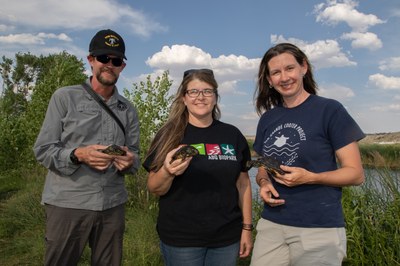
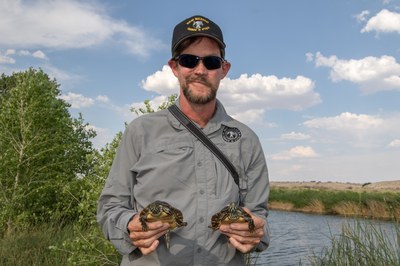
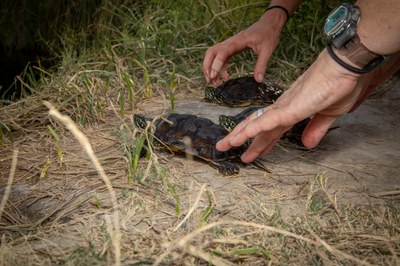
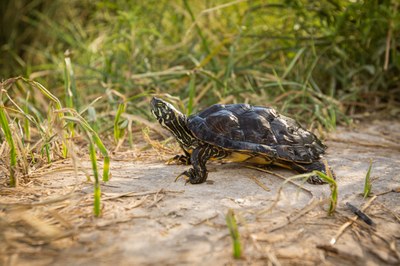
Photos courtesy of Ana Sapp
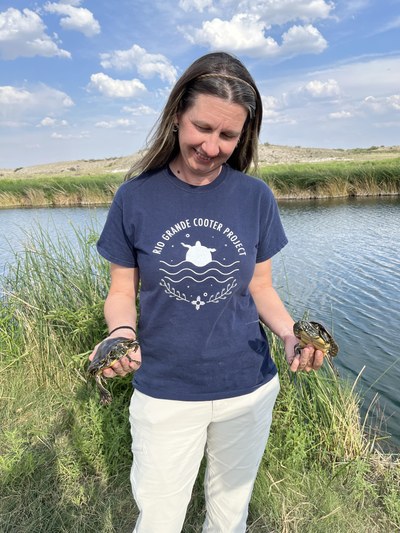
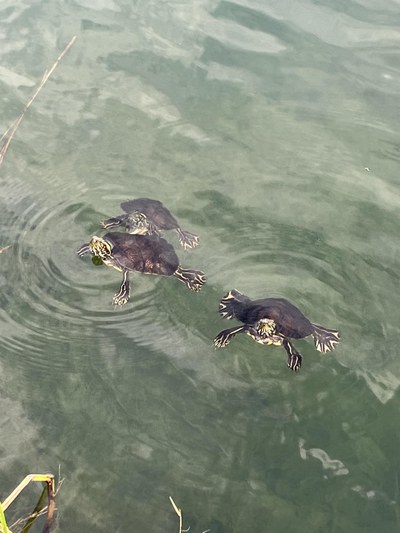
Photos courtesy of Stacey Sekscienski
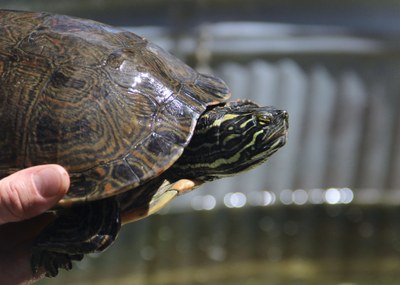
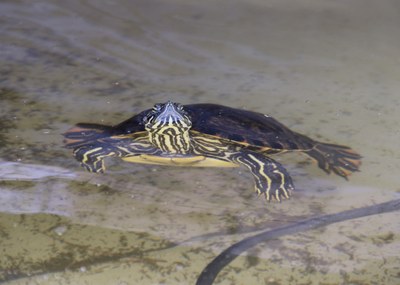
The wild-hatched dam, or mother, of the ABQ BioPark population (left) and another juvenile
